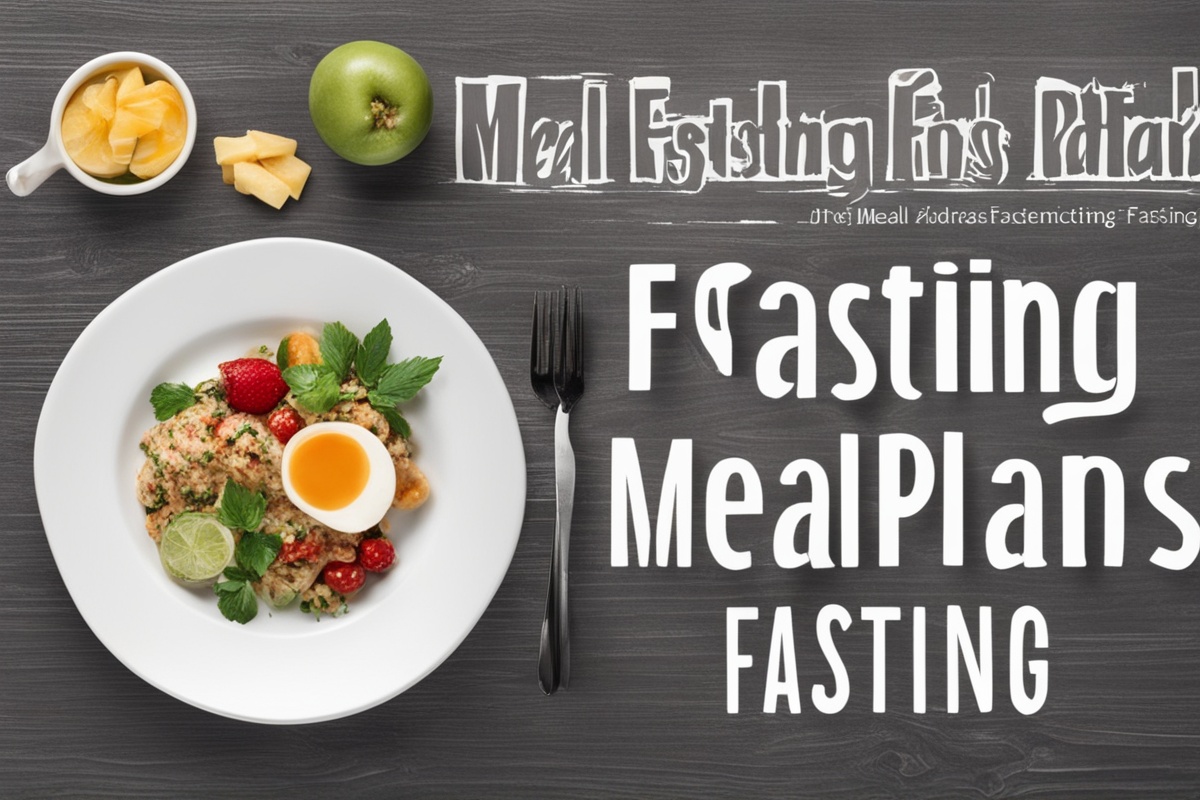Are you curious about how fasting can transform your health but unsure where to start with meal planning? Welcome to the world of health fasting, a practice that’s gained immense popularity for its potential to improve metabolism, mental clarity, and overall well-being. Whether you’re new to fasting or a seasoned pro, crafting the right fasting meal plan is key to reaping the benefits without feeling deprived or overwhelmed. In this guide, I’ll walk you through the ins and outs of creating sustainable fasting meal plans, backed by science and practical tips. Let’s dive into how you can make healthy fasting work for you with delicious, nutrient-packed meals that support your goals.
What Is Health Fasting and Why Does It Matter?
health fasting, often referred to as intermittent fasting or time-restricted eating, involves cycling between periods of eating and abstaining from food. It’s not about starving yourself but rather giving your body intentional breaks from digestion to promote cellular repair, fat burning, and improved insulin sensitivity (Mattson et al., 2017). From the 16/8 method (fast for 16 hours, eat during an 8-hour window) to the 5:2 approach (eating normally for 5 days and restricting calories on 2 days), there are many ways to practice fasting for health
The Science Behind Fasting and Meal Planning
Let’s get a bit nerdy for a moment—why does fasting work, and how do meal plans fit in? When you fast, your body shifts from using glucose as its primary energy source to burning stored fat through a process called ketosis. This metabolic switch can lead to weight loss and improved energy levels (Anton et al., 2018). Additionally, fasting triggers autophagy, a cellular “clean-up” process that may protect against aging and disease (Bagherniya et al., 2018). However, breaking a fast with junk food or overeating can negate these benefits. A strategic health fasting meal plan
Key Components of a Fasting Meal Plan
Creating a meal plan for healthy fasting doesn’t have to be complicated, but it does require intention. The goal is to nourish your body during eating windows with foods that support recovery and energy while avoiding pitfalls like bingeing on empty calories. Here are some core elements to include in any fasting meal plan, whether you’re doing intermittent fasting or longer fasts:
- Prioritize Protein: Include lean meats, eggs, or plant-based options like lentils to preserve muscle mass and keep you full longer.
- Healthy Fats: Avocados, nuts, and olive oil provide sustained energy and support brain health during fasting periods.
- Complex Carbohydrates: Opt for whole grains, sweet potatoes, or quinoa to avoid blood sugar spikes after breaking a fast.
- Hydration Focus: Drink plenty of water, herbal teas, or electrolyte-rich fluids to stay hydrated, especially during fasting windows.
Timing also matters. If you’re following a 16/8 fasting schedule, plan your meals to break the fast with something light, like a vegetable soup, before moving to a heartier dish. This gentle approach helps your digestive system ease back into action.
Sample Fasting Meal Plans for Different Styles
Now that you understand the basics, let’s look at practical health fasting meal plans tailored to popular fasting styles. These are just starting points—feel free to tweak them based on your dietary preferences or caloric needs. I’ve kept them balanced and doable for most lifestyles.
16/8 Intermittent Fasting Plan (Eating Window: 12 PM–8 PM)
– 12 PM (Break Fast): Greek yogurt with berries and a drizzle of honey.
– 3 PM (Lunch): Grilled chicken salad with mixed greens, avocado, and olive oil dressing.
– 6 PM (Snack): A handful of almonds and a sliced apple.
– 7:30 PM (Dinner): Baked salmon with quinoa and steamed broccoli.
5:2 Fasting Plan (Low-Calorie Day, ~500 Calories)
– 8 AM: Black coffee or tea (no sugar).
– 1 PM: Vegetable broth with a small serving of steamed spinach.
– 6 PM: Grilled tofu or white fish with a side of cucumber and tomato salad.
These plans focus on nutrient density to support fasting health benefits. On non-fasting or regular eating days, maintain balance without overindulging to keep your body in rhythm.
Common Mistakes to Avoid with Fasting Meal Plans
While fasting can be a powerful tool for wellness, it’s easy to make missteps that undermine your efforts. I’ve seen many people start with enthusiasm only to hit roadblocks due to poor planning or unrealistic expectations. Here are some pitfalls to watch out for when crafting your healthy fasting diet:
- Overeating During Eating Windows: It’s tempting to “make up” for fasting by overeating, but this can lead to weight gain and digestive discomfort.
- Skipping Nutrients: Relying on processed foods or skipping veggies can leave you nutrient-deficient, countering fasting’s benefits.
- Ignoring Hydration: Dehydration during fasting can cause fatigue and headaches, so keep water handy.
- Pushing Too Hard: Starting with aggressive fasting schedules without easing in can lead to burnout or health issues (Johnstone, 2015).
- Not Listening to Your Body: If you feel dizzy or weak, adjust your plan—fasting should feel sustainable, not punishing.
Remember, fasting is personal. What works for one person may not suit another. Experiment with different eating windows or fasting styles, and consult a healthcare provider if you have underlying conditions like diabetes.
Tips for Sustaining Health Fasting Long-Term
Consistency is the name of the game when it comes to health fasting. A meal plan is only as good as your ability to stick with it. Over the years, I’ve picked up a few tricks to make fasting a seamless part of life, and I’m excited to share them with you. First, prep meals in advance—having a ready-to-go salad or protein source prevents impulsive snacking. Second, pair fasting with mindfulness practices like meditation to manage hunger cues. Finally, track how you feel in a journal. Noticing improvements in energy or mood can keep you motivated. Research suggests that gradual adaptation to fasting improves adherence and reduces side effects (Trepanowski et al., 2017). So, start slow, celebrate small wins, and build a fasting health routine that feels like second nature.
In conclusion, crafting a fasting meal plan is your ticket to unlocking the full potential of health fasting. By focusing on nutrient-dense foods, proper timing, and personalized adjustments, you can turn intermittent fasting or other fasting styles into a sustainable lifestyle choice. It’s not just about skipping meals—it’s about nourishing your body and mind with intention. Whether you’re aiming for weight loss, better focus, or overall wellness, a well-designed healthy fasting plan can make all the difference. So, why not start today? Pick a fasting style, plan your meals, and take the first step toward a healthier you. I’d love to hear how it goes—drop a comment with your experiences or questions!
References
- Anton, S. D., Moehl, K., Donahoo, W. T., Marosi, K., Lee, S. A., Mainous, A. G., … & Mattson, M. P. (2018). Flipping the metabolic switch: Understanding and applying the health benefits of fasting. Obesity, 26(2), 254-268. https://doi.org/10.1002/oby.22065
- Bagherniya, M., Butler, A. E., Barreto, G. E., & Sahebkar, A. (2018). The effect of fasting or calorie restriction on autophagy induction: A review of the literature. Ageing Research Reviews, 47, 183-197. https://doi.org/10.1016/j.arr.2018.08.004
- Johnstone, A. (2015). Fasting for weight loss: An effective strategy or latest dieting trend? International Journal of Obesity, 39(5), 727-733. https://doi.org/10.1038/ijo.2014.214
- Longo, V. D., & Mattson, M. P. (2014). Fasting: Molecular mechanisms and clinical applications. Cell Metabolism, 19(2), 181-192. https://doi.org/10.1016/j.cmet.2013.12.008
- Mattson, M. P., Longo, V. D., & Harvie, M. (2017). Impact of intermittent fasting on health and disease processes. Ageing Research Reviews, 39, 46-58. https://doi.org/10.1016/j.arr.2016.10.005
- Patterson, R. E., & Sears, D. D. (2017). Metabolic effects of intermittent fasting. Annual Review of Nutrition, 37, 371-393. https://doi.org/10.1146/annurev-nutr-071816-064634
- Trepanowski, J. F., Kroeger, C. M., Barnosky, A., Klempel, M. C., Bhutani, S., Hoddy, K. K., … & Varady, K. A. (2017). Effect of alternate-day fasting on weight loss, weight maintenance, and cardioprotection among metabolically healthy obese adults: A randomized clinical trial. JAMA Internal Medicine, 177(7), 930-938. https://doi.org/10.1001/jamainternmed.2017.0936






